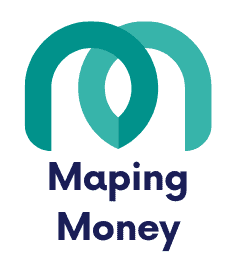5 Essential Tips for Young Adults Saving Money
To save money effectively, start by mastering budgeting with the 50/30/20 rule. Build an emergency fund covering 3-6 months of expenses; it'll give you peace of mind. Focus on debt repayment by tackling high-interest debts first and maintain minimum payments on others. Embrace cash instead of credit to curb spending and develop financial discipline. Finally, set clear financial goals using the SMART criteria; writing them down enhances accountability. Keep fine-tuning your approach, and remember, each step you take builds a stronger financial future. There's plenty more knowledge waiting to help you along your journey.
Key Takeaways
- Follow the 50/30/20 rule to allocate your income effectively: 50% needs, 30% wants, and 20% savings.
- Build an emergency fund with 3-6 months' worth of living expenses for financial security.
- Prioritize paying off high-interest debts first to reduce overall repayment costs.
- Embrace cash over credit to limit spending and avoid accumulating debt.
- Set clear financial goals using the SMART criteria to enhance accountability and motivation.
Master the Art of Budgeting

Mastering the art of budgeting is essential for young adults looking to achieve financial stability and independence. Start by creating a budgeting plan that follows the 50/30/20 rule: allocate 50% of your monthly income to needs, 30% to wants, and 20% to savings. This balanced approach helps you maintain financial health while still enjoying life.
To stay on track, utilize budgeting tools or apps like Mint or YNAB. These tools allow you to track your spending in real-time, making it easier to meet your financial goals. Regularly review and adjust your budget to account for changes in income or expenses; this guarantees you remain aligned with your objectives and avoid overspending.
Don't forget to meticulously track all expenditures. Research shows that 84% of regular budgeters often exceed their planned spending, so awareness and discipline are key. Consider implementing the envelope method—allocate cash into different envelopes for specific spending categories. This technique can limit discretionary spending and help you stick to your budget. By mastering budgeting, you're setting the foundation for a financially free future!
Build an Emergency Fund

Building an emergency fund is essential for your financial security, especially when life throws unexpected challenges your way. An emergency fund acts as a financial safety net, ideally containing 3-6 months' worth of living expenses. This cushion can be a lifesaver during unexpected situations like job loss or medical emergencies.
To maximize your fund's growth, consider storing it in a high-interest savings account or certificates of deposit (CDs). These options offer better returns than regular savings accounts. Make regular contributions to your emergency fund a mandatory expense in your budget. Treating it like a bill guarantees you steadily build your fund over time.
It's wise to keep your emergency fund in a separate account. This reduces the temptation to dip into it for non-emergencies, guaranteeing it remains intact for genuine financial crises. Establishing this fund early can alleviate stress and provide peace of mind, knowing you've got resources ready for unexpected financial burdens. So, take control of your finances, embrace the freedom of security, and start building that emergency fund today!
Prioritize Debt Repayment

When it comes to managing your finances, tackling debt should take center stage. To regain control and achieve financial freedom, you need to prioritize paying off high-interest debts first. These debts accumulate significant costs over time, creating a heavy financial burden. While you maintain minimum payments on all your debts to protect your credit score, direct extra funds toward those high-interest accounts.
Consider implementing a structured timeline for debt elimination. Set specific goals for when you want to be debt-free, which keeps you accountable and motivated. You might also explore the snowball method, paying off the smallest debts first. This strategy helps build momentum, making the process feel more achievable.
Regularly reassess your repayment strategy to guarantee you're making the most efficient use of your available funds. Adjust your plan as needed, focusing on reducing your financial obligations as quickly as possible. Every payment brings you one step closer to freedom from debt, allowing you to invest in your future without the weight of past financial mistakes holding you back. Prioritizing debt repayment is a powerful move on your journey to financial stability.
Embrace Cash Over Credit

After addressing debt repayment, it's time to rethink how you handle your everyday spending. Embracing cash over credit can greatly enhance your money management and help you save money in the long run. When you use cash, you limit your purchases to what you can physically afford, reducing the risk of accumulating credit card debt.
Studies show that people tend to spend 12-18% more when using credit cards. By opting for cash, you gain a clear understanding of your available funds, making it easier to stick to your budget and avoid overspending. This tangible approach to spending encourages financial discipline, forcing you to prioritize needs over wants and regularly assess your spending habits.
Transitioning to a cash-based system not only helps you avoid the pitfalls of credit but also saves you from interest payments that can accumulate into hundreds or even thousands of dollars. By embracing cash, you're taking a proactive step toward a healthier financial future. So, grab that cash, set clear limits, and watch your financial stability grow as you develop smarter spending habits!
Set Clear Financial Goals

Setting clear financial goals acts like a compass, guiding you toward your financial aspirations. To truly harness your financial potential, you should set clear financial goals that encompass both short and long-term objectives. Short-term goals, like saving for a vacation or paying off a credit card, can be achieved within a year, while long-term goals, such as retirement savings, require consistent effort over time.
One effective method is writing down your financial goals. This enhances accountability and makes tracking progress easier. Studies show that people who write their goals down are 42% more likely to achieve them! Use the SMART criteria—Specific, Measurable, Achievable, Relevant, and Time-bound—to create clear targets that reflect your financial situation.
Don't forget to regularly reassess your financial goals. Life changes, and so should your strategies. Adjust your plans based on shifts in income or expenses to keep your goals achievable. Incorporate these money-saving tips and watch as your financial aspirations transform into reality. By setting clear financial goals, you'll pave the way for the freedom and security you desire.







